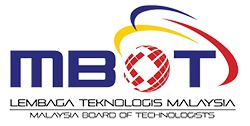Analysis the Influences of Combustion Strategies and Technologies on Emission in Gasoline and Diesel Engine
Keywords:
Engine Emission, Technologies for reducing emissions, Exhaust Gas Recirculation, Homogenous Charge Compression Ignition (HCCI), Stratified EGRAbstract
The paper reviews the technologies available to meet the exhaust emissions regulations for Internal Combustion Engine for light-duty and heavy-duty vehicles, non-road mobile machinery and motorcycles. This includes fast light-off catalysts, more thermally durable catalysts, improved substrate technology, diesel particulate filters, selective catalytic reduction, NOx absorbers and lean De NOx catalysts. The stricter worldwide emission legislation and growing demands for lower fuel consumption and anthropogenic CO2 emission require significant efforts to improve combustion efficiency while satisfying the emission quality demands. Ethanol fuel combined with gasoline provides a particularly promising, and at the same time, a challenging approach. Extensive usage of automobiles has certain disadvantages and one of them is its negative effect on environment. Carbon dioxide (CO2), carbon monoxide (CO), hydrocarbons (HC), oxides of nitrogen (NOx), sulphur dioxide (SO2) and particulate matter (PM) come out as harmful products during incomplete combustion from internal combustion (IC) engines. As these substances affect human health, regulatory bodies impose increasingly stringent restrictions on the level of emissions coming out from IC engines. Modern combustion techniques such as low temperature combustion (LTC), homogeneous charge compression ignition (HCCI), premixed charge compression ignition (PCCI) etc., would be helpful for reducing the exhaust emissions and improving the engine performance. However, controlling of auto ignition timing and achieving wider operating range are the major challenges with these techniques.





